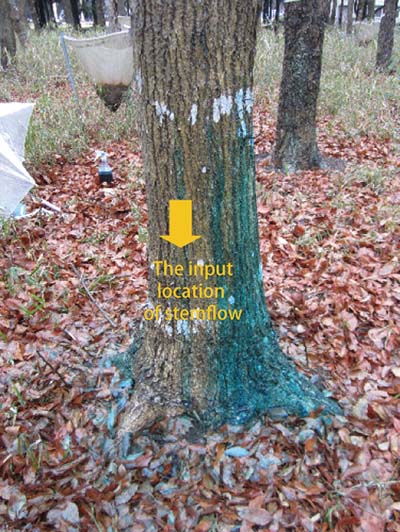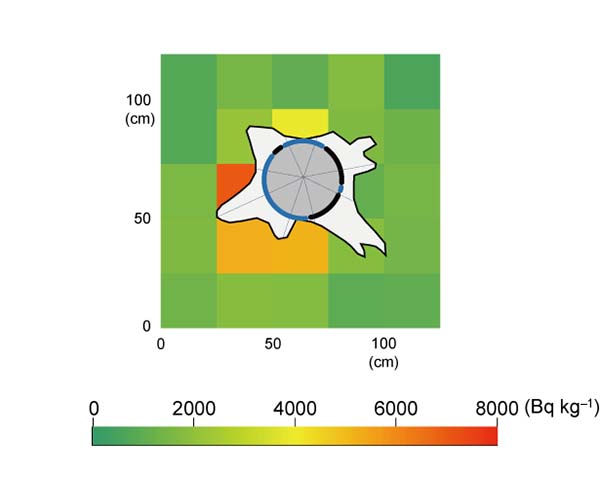Home > Research > Research Results > Research Results 2017 > Increases in radiocesium concentrations and stocks in soil based on the concentration of stemflow from tree trunks
Update:August 22, 2017
Main content starts here.
Increases in radiocesium concentrations and stocks in soil based on the concentration of stemflow from tree trunks
| Article title |
Stemflow-induced spatial heterogeneity of radiocesium concentrations and stocks in the soil of a broadleaved deciduous forest |
|---|---|
| Author (affiliation) |
Naohiro Imamura (a), Delphis F. Levia (b), Jumpei Toriyama (c), Masahiro Kobayashi (a), Kazuki Nanko (d) (a) Center for Forest Restoration and Radioecology, FFPRI, Tsukuba, Ibaraki, Japan. (b) University of Delaware, Newark, DE, USA. (c) Kyushu Research Center, FFPRI, Kumamoto, Japan. (d) Department of Disaster Prevention, Meteorology and Hydrology, FFPRI, Tsukuba, Ibaraki, Japan. |
| Publication Journal |
Science of the Total Environment, 599–600:1013–1021, December 2017, DOI: 10.1016/j.scitotenv.2017.05.017( External link ) |
| Content introduction |
Forests have become extensively contaminated by the large quantity of radionuclides released from the Fukushima Dai-ichi Nuclear Power Plant accident. In particular, the presence of radiocesium in the forest is problematic because of its long half-life. Although accurate determination of the extent of forest contamination by radiocesium is required for various countermeasures, variation in its spatial distribution is large in forests. Thus, it is necessary to clarify the factors that influence the extent of variation in spatial distribution in forests. Based on the examination of the spatial distribution of radiocesium in the soil and the input location of stemflow from tree trunks (Photo 1), we observed elevated levels of radiocesium concentrations and stocks in the soil where stemflow inputted (Figure 1). Furthermore, we found that the larger the canopy projection area of the tree, the greater the accumulation of radiocesium around the base of the trunk. These results indicate that radiocesium originating from the atmosphere is captured by tree leaves, branches, and trunks and is accumulated around the tree trunk owing to stemflow. Based on the clarification of the influence of stemflow on the radiocesium transport process, we can accurately determine its spatial distribution in forests. This is expected to be useful in explaining radiocesium transport between the trees and soil.

Photo. Determining the input locations of stemflow using a dye experiment. Areas of the trunk with attached dye (blue) indicate where stemflow did not occur. Areas with no attached dye indicate where stemflow occurred.
Figure. Distribution of radiocesium in the soil and input locations of stemflow. Blue portions indicate input locations of stemflow. Black portions indicate where stemflow did not occur. |
Copyright © Forest Research and Management Organization. All rights reserved.

